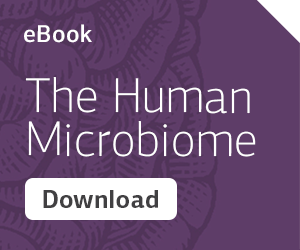What is the Gut Microbiome?
The gut microbiome is a collection of microorganisms that includes bacteria, viruses, and fungi and plays a central role in our health. In addition to the gut, microbiomes exist nearly everywhere: in both the environment and within the human body’s skin, mouth, and more.
The gut microbiome is home to trillions of microorganisms that influence our health. It is involved in many physical processes (digestion, nutrient absorption, and immune response), and its influence can be either positive or negative based on how the microbes interact with each other and their environment.
It’s a pretty sweet deal for microbes in the gut microbiome: a place to live, a constant source of nutrition, and a massive community of microbial neighbors. Unfortunately, its inhabitants don’t always repay their host’s generosity. Some have a positive (mutualistic) effect, some a neutral effect, and some have a negative effect1 — so rude!
The human gut microbiome may be one of many microbiomes in the world, but often when you hear the single term “microbiome,” it’s in reference to the gut microbiome. Even more, while the gut microbiome includes a host of microorganisms, much of the conversation revolves around bacteria.
“Bad” bacteria can express various hostilities that are detrimental to human health and can cause an off-balance microbiome status known as dysbiosis. On the other hand, “good” (mutualistic) bacteria in the gut microbiome provide benefits to human health by reducing the number of pathogenic bacteria in the GI tract.1 They challenge “bad” bacteria by competing for the same micronutrients, carbon sources, and binding locations. “Good” bacteria also secrete antimicrobials and deliver toxins that target pathogenic bacteria, killing them off before they can harm the body. They promote a balanced microbiome status known as homeostasis. They’re basically superheroes who patrol the gut, looking for villains who want to do us harm.
Mutualistic bacteria in the gut microbiome include:
- Bifidobacteria
- Lactobacillus
- Firmicutes and Bacteroidetes
Pathogenic bacteria in the gut microbiome include:
- Campylobacter
- Enterococcus faecalis (E. faecalis)
- Clostridium difficile (C. diff)
Our gut microbiome evolves over time, beginning before birth and changing until we die. The composition of our gut microbiome shifts as we age, make different lifestyle choices, and expose themselves to different environments. Over time, pathogenic bacteria have many opportunities to colonize your gut.
Diet is a key part of your lifestyle, and it has a large impact on the composition of your individual gut microbiome.2 Your diet changes throughout life, often beginning in infancy with breastmilk. Breastmilk contains prebiotics called human milk oligosaccharides (HMOs) that feed and promote specific mutualistic bacteria species, such as Bifidobacterium adolescentis in infants.3
Prebiotics come from either food or prebiotic nutritional supplements and cannot be digested by humans. While prebiotics are usually fiber, not all fibers are prebiotics, and not all prebiotics are fibers. Prebiotics serve as a source of nourishment for mutualistic bacteria.
Probiotics are microorganisms that support human health after consumption, either as food (yogurt and other fermented foods) or supplement.
The gut microbiome supports human health by aiding in the optimization of:
- Nutrient absorption
- Barrier protection from “bad” microorganisms
- Gut-brain axis (impacting mood)
- Weight management
- Immune support4
We still have a lot to learn. Eventually we will be able to assess diet, genetics, and the microbiome to see how these complex factors influence the human body. This information, combined with an understanding of each person’s nutritional status, can help provide comprehensive solutions to optimize health. Download our ebook today.
[1] https://www.ncbi.nlm.nih.gov/pmc/articles/PMC4402713/
[2] https://www.mdpi.com/2072-6643/11/12/2862/htm
[3] https://www.sciencedirect.com/science/article/pii/S1756464619304086









